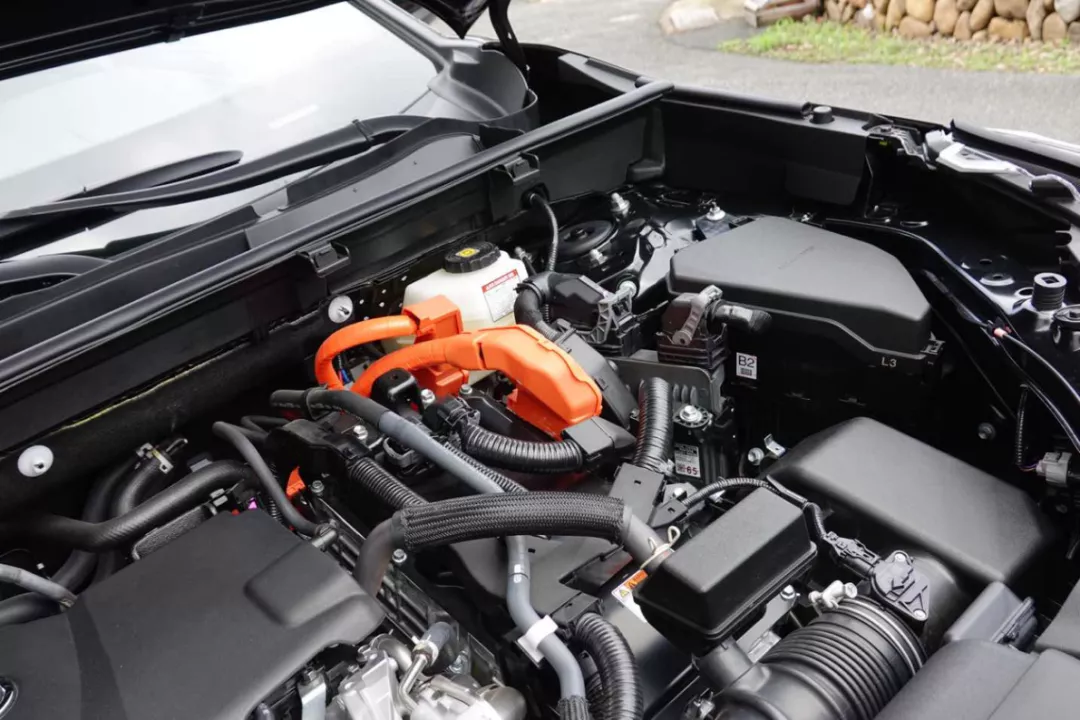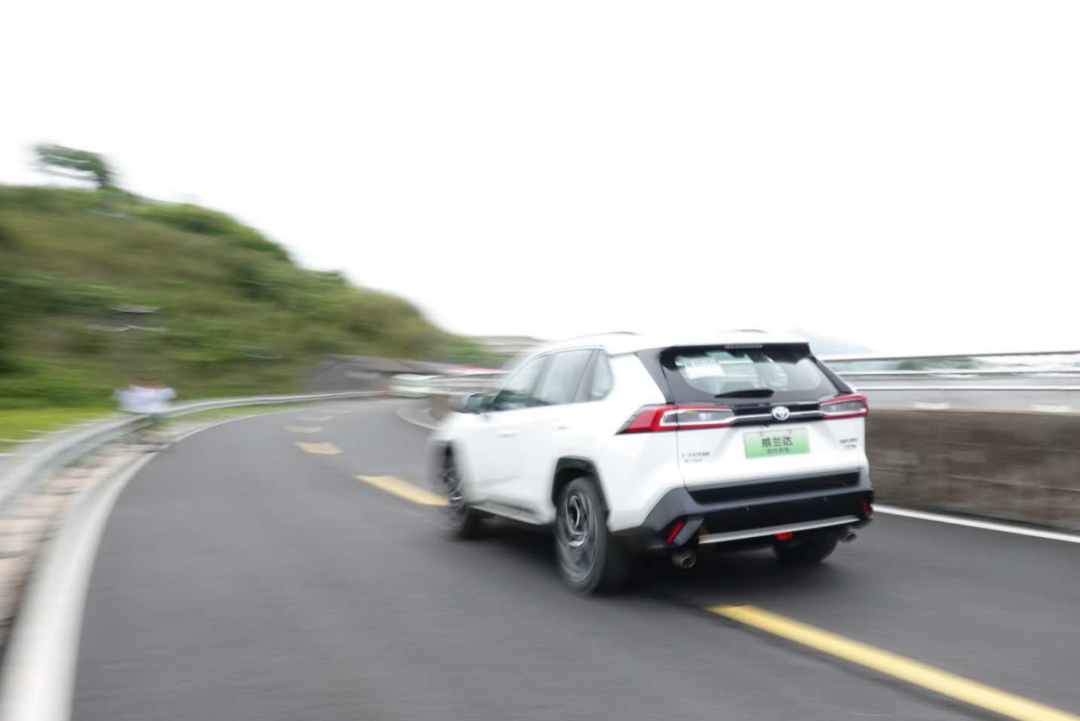This article was reproduced from the official account of autocarweekly
Author: Hoo
The famous “Gasoline nail household” in Aichi Prefecture finally gets to see the green license plate in a positive light. Actually, Toyota had already launched the plug-in hybrid version of RAV4 in overseas market in 2019: RAV4 Prime. Today, the Guangzhou-Toyota version of “RAV4” Wildlander, with a plug-in hybrid, has earned another name: Wildlander high-performance edition.
Does it sound a bit strange? Then it’s my obligation to remind you of a fact: among Toyota’s existing lineup, only GR YARiS and the 3.0T version of Supra can run 0-100 km/h faster than RAV4 Prime (5.7 s) – and the latter relies on a German heart. Admittedly, Prime, equipped with all-wheel-drive and assistance from electric motors, can be a bit of a “cheater”, but before getting into my test drive, I have to give Toyota’s plug-in hybrid a heads up: it’s not a puny guy designed just for saving fuel.
Wildlander High-Performance Edition – or Wildlander Dual Engine E+, its plug-in hybrid powertrain is actually in line with the THS II hybrid system that Toyota previously used. The Dynamic Force series 2.5L naturally aspirated engine with the code name A25 and the E-CVT with a parallel gear set consisting of two electric motors together form the front-axle power module – the difference is just that the high-performance plug-in hybrid version (Dual Engine E+, 134 kW) has a motor power larger by one notch than the regular Dual Engine Wildlander (88 kW). The rear axle of the two versions is exactly the same: no electric motor for the two-wheel drive version, and a 40 kW rear axle motor for the four-wheel drive version.
Dual Engine:
Two-wheel drive, front small motor (88 kW), no rear motor;
Four-wheel drive, front small motor (88 kW), rear small motor (40 kW).
High-performance / Dual Engine E+:
Two-wheel drive, front large motor (134 kW), no rear motor;
Four-wheel drive, front large motor (134 kW), rear small motor (40 kW).

While reminding myself that “this is the second fastest Toyota car in China” (GR YARiS hasn’t arrived), I opened the left front door of the Wildlander, which was just as ordinary as a regular grocery-purchasing version, and before pressing the accelerator pedal to join the main road, I couldn’t help but wonder how the upcoming “car” performance would split the difference.On the straight line, with sufficient power, the high-performance version of the RAV4 will never disappoint the word “high-performance”. Especially the four-wheel drive version with rear-axle electric motor in the middle and high configuration, the total output power of 306 horsepower has crossed the threshold of “big guns”, not to mention the electric motor “cheating device” with a relative proportion, and the 0-100 km/h acceleration time of 5 seconds is so fast that you can hardly believe it is a Toyota SUV. In any common working condition, a fully pressed accelerator pedal mixes the acceleration with the engine sound in the front compartment, which has both the flavor of the era of internal combustion engines and the magical acceleration of electric vehicles.
In order to feed the “cheating devices” well, the nickel-hydrogen battery, which was originally located under the rear seat of the hybrid version, has now become an 18kWh lithium-ion battery pack spread on the chassis. The pure electric range under comprehensive working conditions is 87-95 km(four-wheel drive/two-wheel drive), far exceeding the 50 km qualification line of policies. Therefore, even if the test drive car is constantly under abuse, the displayed range under almost full battery can still reach more than 50 km. After all, with the name of “high-performance”, the comprehensive working condition without full throttle is not your “comprehensive working condition”.
However, for the plug-in hybrid, it is not difficult to balance power and fuel consumption at full battery state, and it cannot fully reflect the true strength of Toyota THS.
When the power is insufficient or the HV mode is turned on (similar to power reserve and priority use of the internal combustion engine), the reduction of absolute power is unavoidable, but the excellent engine ensures that the power response is still guaranteed. In the state of low load cruising with the accelerator pedal fully pressed, the out of power motor is naturally no longer sharp, but the 2.5L naturally aspirated engine has a fast response speed, and the individual output can be roared and pulled up in less than half a second. The rise of engine load and the change of acceleration follow the movement of your right foot, without the contemplation of downsizing the small displacement turbo charged engine, nor the suffocation of GPF blocking the exhaust of China VI emission standard.
The energy consumption performance during feedback is also similar. Plug-in hybrids usually use pure electric range to reduce fuel consumption per hundred kilometers, which is a rogue move. This is the stubborn trouble of many P2 position models with an added electric motor to become a plug-in hybrid: using electricity to lower fuel consumption is only possible when there is electricity, otherwise it becomes a pony (a smaller internal combustion engine) pulling a large car (with added battery and motor weight), which is not fuel-efficient at all. The plug-in hybrid system of RAV4 is based on Toyota THS double planetary gear speed regulation. The only difference from the hybrid is the size of the electric motor’s power output. Even if the battery level drops to below the pure electric range, its ability to maintain the engine working in the high-efficiency range is still there.In addition to the jokingly 1.1L fuel consumption (which is completely meaningless as it is dragged down by pure electric range), GAC Toyota also provides the official comprehensive fuel consumption in HEV mode: 5.2-5.5 L/100km. Unfortunately, I didn’t encounter any congested roads during my whole day’s journey, so I could only use occasional intense driving tests as a substitute. The result I obtained in HEV mode was only 4.8-5.0L, which is pretty impressive for an almost 4.7-meter-long SUV with spacious seating for five people.
In other words, even if you use only a small fraction of the dozen or so kWh of electricity, the lower limit of the Venza plug-in hybrid version is equivalent to nothing more than a “dual-engine with a weight gain of 200 kg.”
Although it is labeled as a “high-performance version” and is equipped with red stitching and sport seats, don’t be mistaken that the Venza has turned into a hot hatch. The “high-performance” aspect of this car is more reflected in straight-line acceleration. The new generation of Toyota under the TNGA architecture generally has dynamic performance after a brief period of adaptation, but it is a little crazy to regard it with serious performance car standards.
The central knob of the Venza High Performance version is used to switch between the Eco, Normal, and Sport driving modes, which can be paired with two of the three power modes: EV (electricity priority), HV (fuel priority), and Auto EV (automatic). Different driving modes will change the steering feel and throttle aggressiveness of the vehicle. It is gratifying that in all three modes, the steering has sufficient damping and gain-reversal torque, completely unlike the new generation of German cars that have become dull and heavy after becoming electronic.
However, when driving on narrow mountain roads, this hybrid SUV is still lacking a bit of precision and agility. It is difficult to achieve perfect steering in the turns, and occasional slight corrections are unavoidable. Some of the missing road feel is also expected. Even if you have four-wheel drive to give you courage, on the wet and slippery roads caused by mountain fog, problems with lateral grip will make you less confident. The Venza High Performance version, as a family SUV, reveals its limitations as soon as you try to push it. “Joy” and “pleasure” are often separated by this barrier.A family SUV that runs as fast as a high-performance car is the password to unlock the potential of the Toyota Highlander high-performance version. Equipped with a plug-in hybrid system, but thanks to the overall layout of the battery under the car, the interior space of the Highlander high-performance version remains unaffected, with a spacious five-seater space, absurdly numerous storage compartments, and a rear row that can still be split and folded down, with a spare tire hidden under the trunk. Even better, there is a 1500W power output on the side of the trunk, which camping enthusiasts will appreciate.
Whether it’s the Toyota Highlander or the overseas version RAV4 Prime, they are both based on Toyota’s comprehensive THS hybrid system. Plug-in hybrids have become even more niche than pure electric vehicles, largely due to the excessive number of products oriented towards government policies. Simply adding a P2 or P4 motor and relying entirely on the motor’s electrical energy to increase power and suppress fuel consumption results in either a fierce electrifying experience with zero fuel consumption or a motionless vehicle without electricity. Ultimately, they become market chicken ribs heading for the edge.
The “plug-in hybrid with power distribution mechanism” was once the sole domain of the Buick Velite 6. Today, Toyota and Honda have built their plug-in hybrids on the basis of THS and i-MMD, respectively, keeping up with new domestic hybrids such as the BYD DM-i, GWM DHT, and Chery DHT. If these plug-in hybrid technologies were taken one step further and the direct connection to the drive wheel was removed, they would be no different from the extended-range type hybrid advocated by Ideal and Voyah. This is no coincidence.
Let’s put aside the power of independent brands just entering the market for now. Honda’s CR-V rui·hybrid e+, which was launched earlier, is a surprise competitor. However, if you consider practical factors, you’ll be surprised to find that with a smaller battery capacity (16 kWh vs. 18.1 kWh), the fuel tank of the CR-V rui·hybrid e+ has shrunk by half to only 26L compared to the gasoline/hybrid version, while the Toyota Highlander high-performance version remains unchanged at 55L – for the first time, I feel it’s necessary to talk about the range of plug-in hybrid cars. With the same plug-in hybrid layout of the battery underneath the car, the difference in space utilization efficiency is puzzling.Toyota’s president, Akio Toyoda, has repeatedly questioned electric vehicles, only to be misunderstood as trying to save face. In fact, Toyota’s own native electric platform, e-TNGA, is only one step away from mass production. What Toyoda is truly against is the premature abandonment of internal combustion engines in the rush towards electrification. In Toyota’s plan, by 2030 or even 2040, the vast majority of fuel-efficient vehicles replaced by various hybrid models will still dominate the market – but they don’t deny the “big trend,” only the “speed of the trend.”
This is obviously contrary to the popular enthusiasm for new energy, but it is a rhinoceros that everyone ignores right before their eyes.
This article is a translation by ChatGPT of a Chinese report from 42HOW. If you have any questions about it, please email bd@42how.com.
